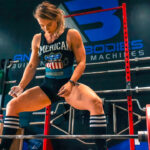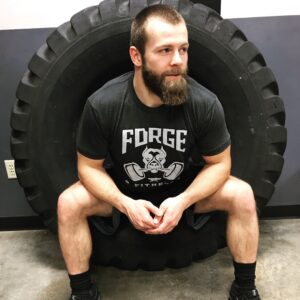Knees caving in the squat is a no-no.
If you’re not a total noob, you probably know that your knees are supposed to track over your feet throughout the squat in order to minimize risk of injury and optimize performance. “Valgus Knee Collapse” is specifically when your knees collapse inward. Slight valgus isn’t a huge deal, but when the outside of a person’s knee travels past the inside of their foot, it’s time for some corrective action. There are three things that could be going wrong, and you should start with the one that’s easiest to fix:
Technique/Neuromuscular Recruitment:
Often people don’t realize what’s going on with their knees while they’re squatting, and simply trying a few different movement cues might solve the problem:
Suggesting “screw your feet outwards into the ground” or “spread the floor” are helpful ques that help engage the external rotators in the glutes. Slow eccentric squats and tempo squats with lighter weight might also allow you to focus on keeping your knees tracking over your feet. Once you’ve exhausted your technique cues and exercises, if you still have issues, it’s time to move on to the next easiest fix:
Mobility:
It’s also possible that certain restrictions in the joint capsules of the hip can keep you from squatting to full depth with stable knees. Before jumping to this conclusion though, test the squat with light-ish weight to see if you’re capable of getting into position properly and comfortably without a heavy load (take video!)
If you can’t, you probably need to work on increasing internal and external rotation of your femur. That means that the ball and socket joints that connect your legs to your hips are restricted by tight surrounding tissue and need to be loosened up in order to move properly. There are tons of ways to do that, but Side Lunges and Standing Leg Swings are a good place to start.
If, on the other hand, you can get into a solid squat position with light weight, but your knees start to collapse inward as the weight gets heavier, the problem is more likely:
Muscular Imbalance:
Greater quad recruitment relative to hamstring recruitment has been shown to be directly related to valgus knee collapse. Muscles responsible for the external rotation of the femur, specifically the glute medius and maximus, may also be responsible if weak or not firing correctly.
You can target the hamstrings effectively with Single Leg Romanian Deadlifts and target the Glute Medius effectively with Band Squats: Put a resistance band around your knees and squat to full depth while driving your knees outward into the band. Variations on the squat movement that engage the posterior chain (the muscles on the back of your body) more, such as the Sumo Deadlift, are also highly recommended.
That’s the much abridged version of how to fix your Valgus Knee Collapse. Hope it helps! Share with someone who needs it and hit us up with any questions!
By the way, here’s the link to the scholarly article I used as a source for this one. It’s a thousand times more detailed and it’s available for free on google scholar. Check it out if you’re into that sort of thing!
https://www.ncbi.nlm.nih.gov/pmc/articles/PMC4725067/







0 Comments
Leave A Comment